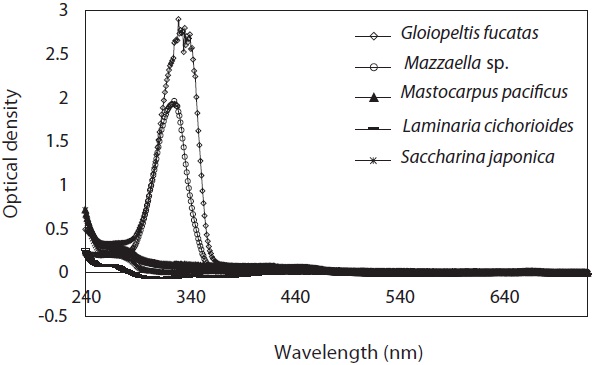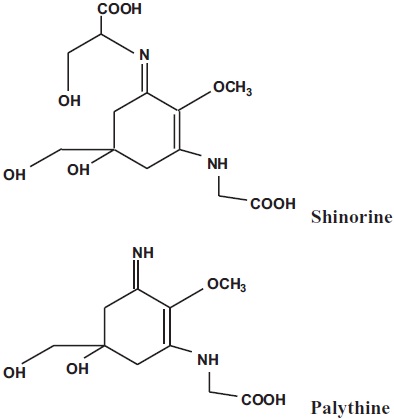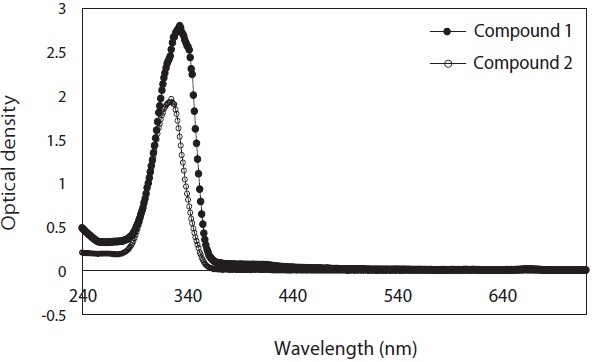



Ultraviolet (UV) radiation is one of the most harmful exogenous agents and affects numerous biological functions in all sun-exposed living organisms. Organisms are exposed to solar radiation, including harmful UV-B (280-320 nm) and UV-A (315-400 nm) radiation, in their natural habitats. Repetitive exposure to sun causes premature skin aging (Marrot and Meunier, 2008) and skin cancer (Afaq et al., 2005; de Gruijl and Ananthaswamy, 2010). In response to intense solar radiation, organisms have evolved certain mechanisms, such as avoidance, repair, and protection by synthesizing or accumulating photoprotective compounds, such as mycosporinelike amino acids (MAAs).
In the present study, we investigated the UV absorption power of Russian seaweeds and isolated UV-absorbing constituents from them.
Five species of seaweed were collected at Sacchalin, Russia, from February to July 2011 (Table 1) by the TINRO-center, and stored frozen at -20℃.
The seaweeds samples were extracted in 10 volumes of 0%, 50%, and 100% aqueous ethanol a using sonicator. The extracts were evaporated using a rotary evaporator.
>
Isolates derived from Gloiopeltis fucatas and Mazzaella sp. in Russia
The 50% aqueous ethanol extracts from
>
Measurements of UV absorption spectra
UV absorption spectra of seaweed extracts were evaluated using an Optizen 2120UV spectrophotometer (Mecasys, Daejeon, Korea) for wavelengths of 240 to 720 nm at a concentration of 1 mg/mL (Oyamada et al., 2008).
[Table 1.] The yield of five Russian seaweeds (%)

The yield of five Russian seaweeds (%)
UV radiation is either reflected or absorbed by sunscreens. Different structural molecules have unique absorption wavelengths. An absorption spectrum will show a number of absorption bands that correspond to structural groups within the molecules.
In the present study, we examined the UV absorption properties of five Russian seaweeds within the range of 240 to 720 nm. Among the seaweeds,
(Fig. 2) (Bandaranayake, 1998; Shick and Dunlap, 2002; Oyamada et al., 2008). This is the first time that these compounds have been isolated from
Shinorine and palythine are MAAs. MAAs are colorless water-soluble secondary metabolites that have a cyclohexenone chromophore conjugated to a nitrogen substituent of either an amino acid or imino alcohol; they have been identified in fungal metabolites, cyanobacteria, red algae, and corals (Takano et al., 1978; Dunlap and Yamamoto, 1995; Bandaranayake, 1998; Shick and Dunlap, 2002). MAAs have high levels of absorption for UV-A and UV-B (280-400 nm) (Bandaranayake, 1998; Shick and Dunlap, 2002).
In conclusion, extracts from



